
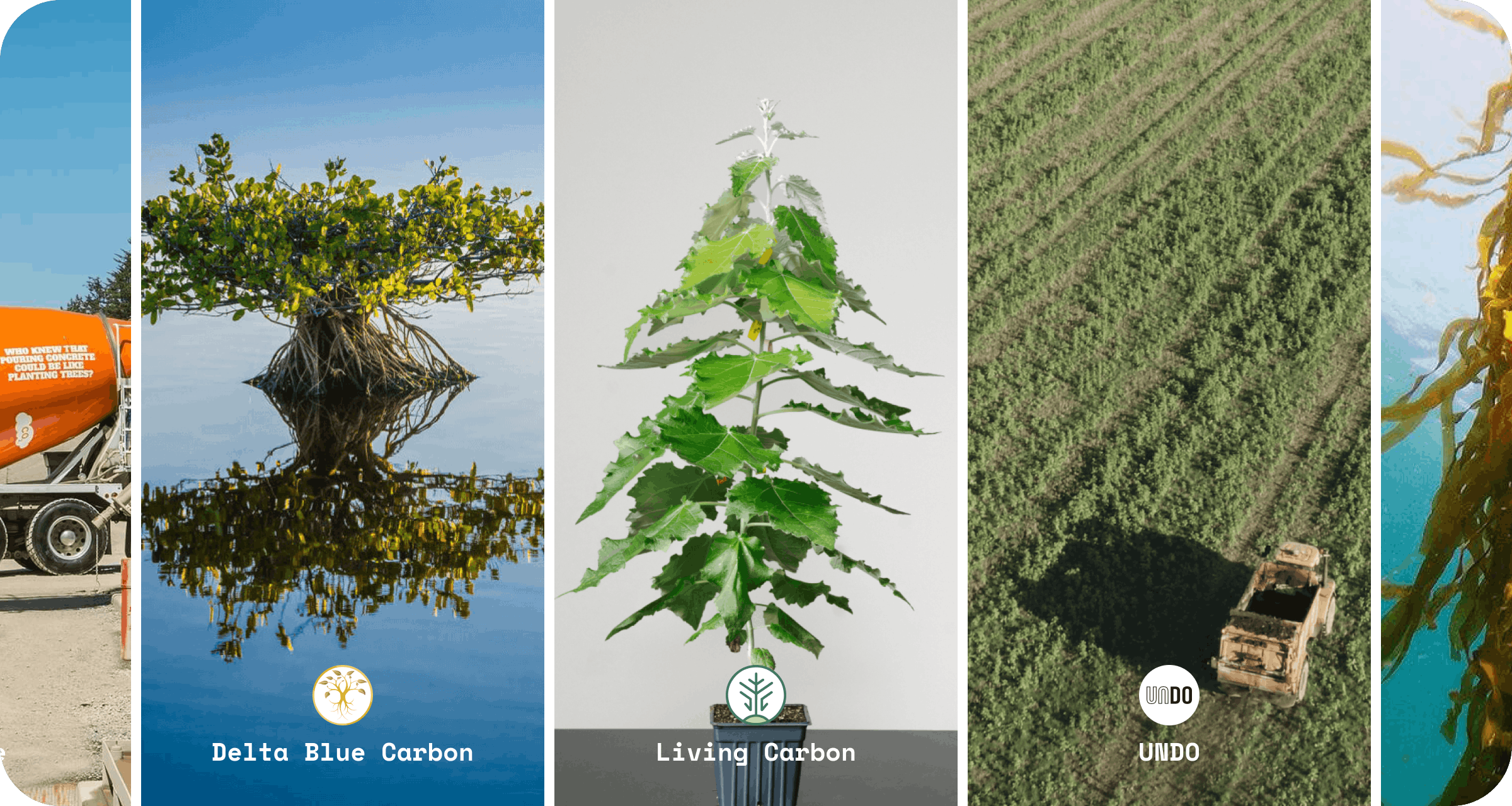
How can we see the tangible, real-world impact of the carbon credits we buy from a project? It’s a request we often get from our Lune customers.
So, to help bring the impact of business carbon offsetting to life, we’re publishing monthly updates from Lune’s library of curated, high-quality carbon offset projects (we won’t have updates for every project every time, but we’ll share what we do) – and this is the update for February 2023.
To support any of the projects mentioned in this blog, go to the Lune dashboard to buy carbon credits (you’ll need to sign-up or log-in to access the projects.)
CarbonCure – concrete mineralisation 🏗️
This month CarbonCure and Heirloom (a Direct Air Capture project) hit a huge milestone through their collaborative demonstration project: carbon dioxide captured via Heirloom’s DAC was permanently stored in concrete for the first time ever, using CarbonCure’s technology for injecting CO2 into concrete.
This means that the carbon emissions removed by DAC can now be put to use in construction, and will still stay safely out of the atmosphere.
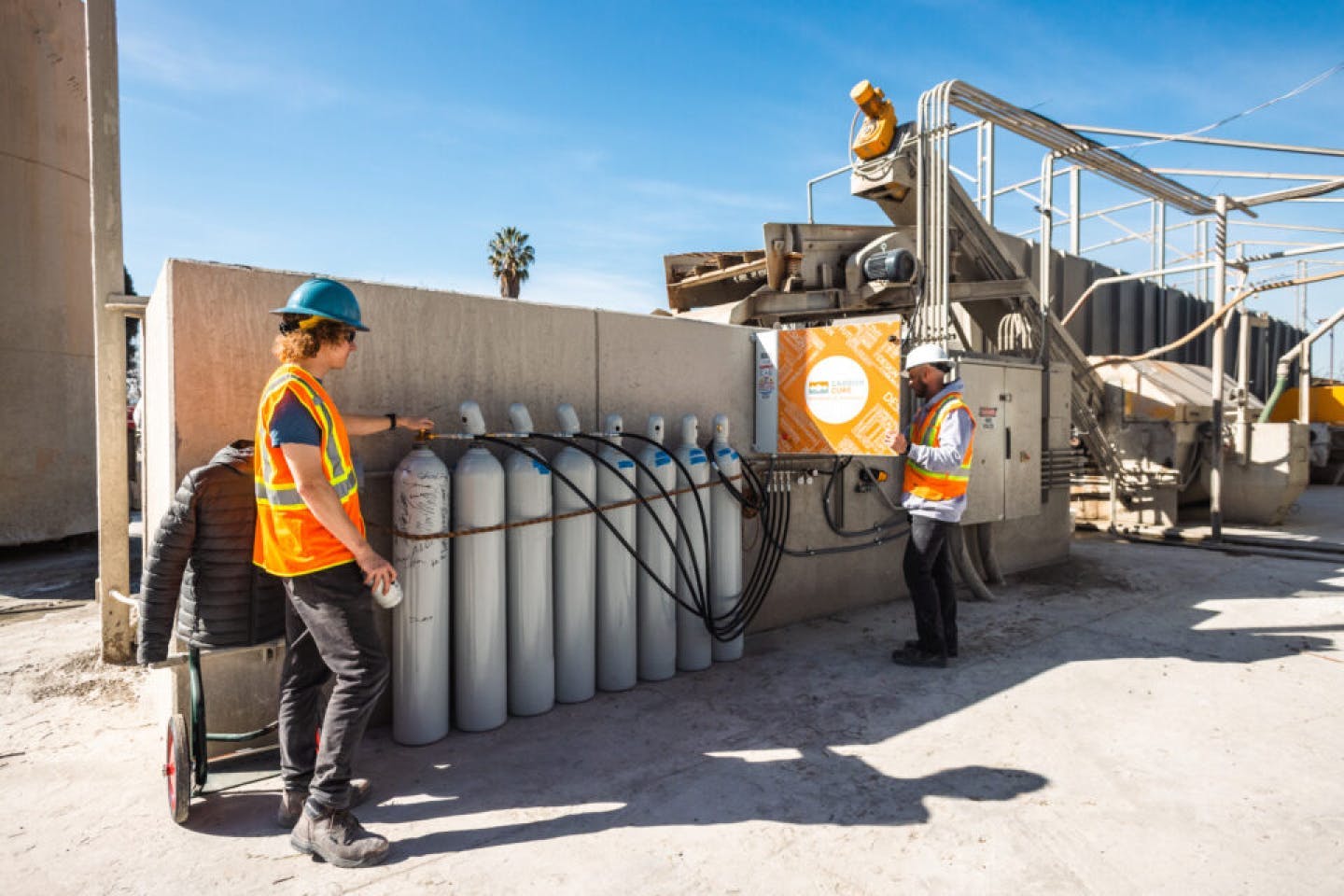 Photo credit: Carbon Cure technologies
Photo credit: Carbon Cure technologiesDelta Blue Carbon – mangrove restoration 🌿
Delta Blue Carbon have been continuing their community benefit work, ensuring local communities gain from the mangrove restoration work in the project area.
In the past month, this includes:
- A training and awareness session for local communities on safe drinking water and hygiene.
- A medical camp in partnership with NGO Shine Humanity, providing health check ups and medicine free of charge to local communities.
The project team has also been busy conducting monitoring checks. Recently they performed a biodiversity check, collecting data on biodiversity data within the project’s conservation area.
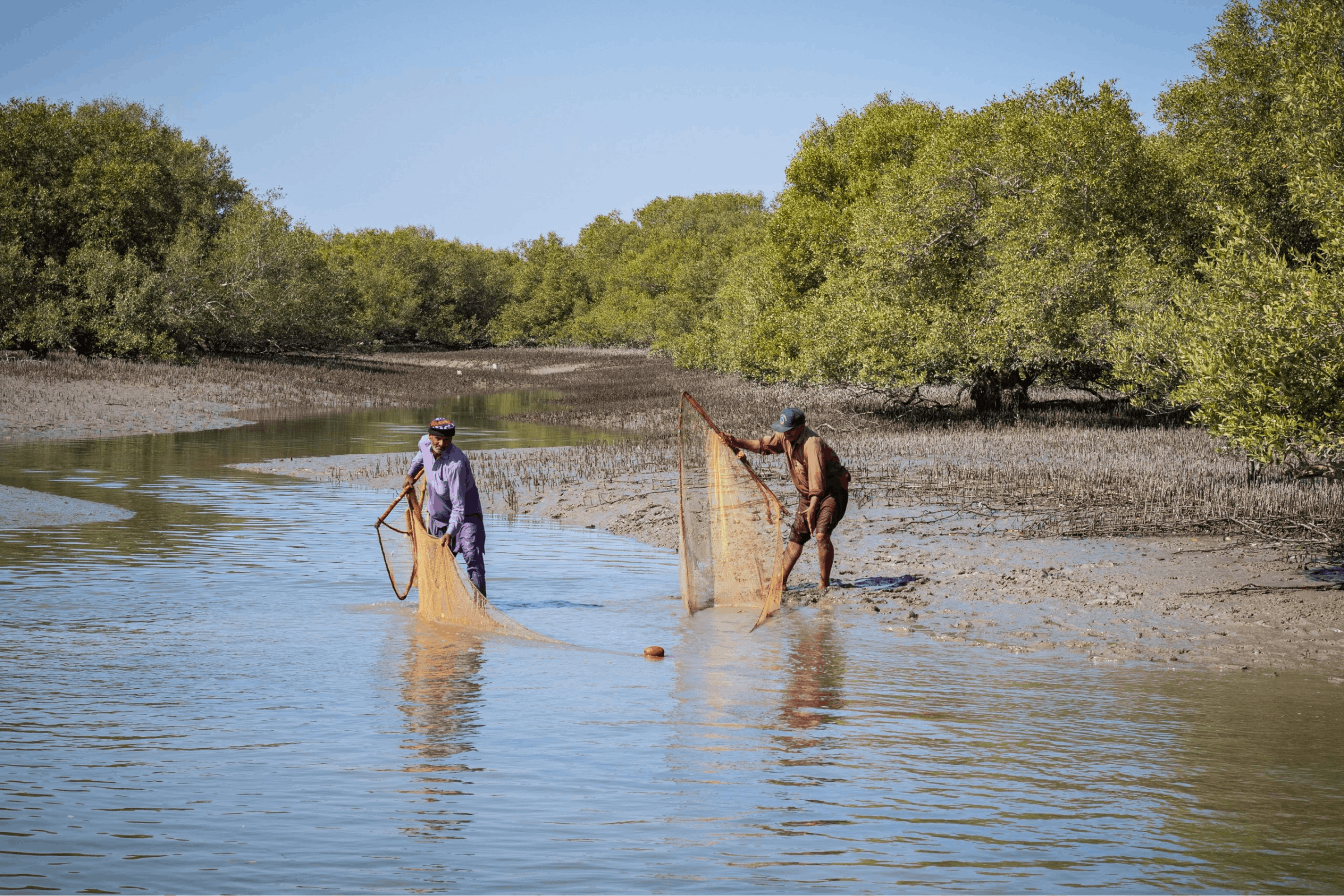 The Delta Blue Carbon team gathering data to measure biodiversity conservation in the project area. Photo credit: Delta Blue Carbon.
The Delta Blue Carbon team gathering data to measure biodiversity conservation in the project area. Photo credit: Delta Blue Carbon.Living Carbon – biotech-enhanced reforestation 🌳
Living Carbon shared that they have raised a successful series A round of $21 million from investors including Temasek, Lowercarbon Capital, and Toyota Ventures!
This is great news, meaning the Living Carbon team will now be able to continue and to accelerate their project – which is identifying and implementing ways to enhance the natural carbon removal power of trees.
The funding means that the team can hit their goal of planting 4 million seedlings of their photosynthesis-enhanced hybrid poplar tree, which grows at a rate 30-50% faster than standard seedlings. They will also continue their Research & Development pipeline to continue finding new, innovative solutions.
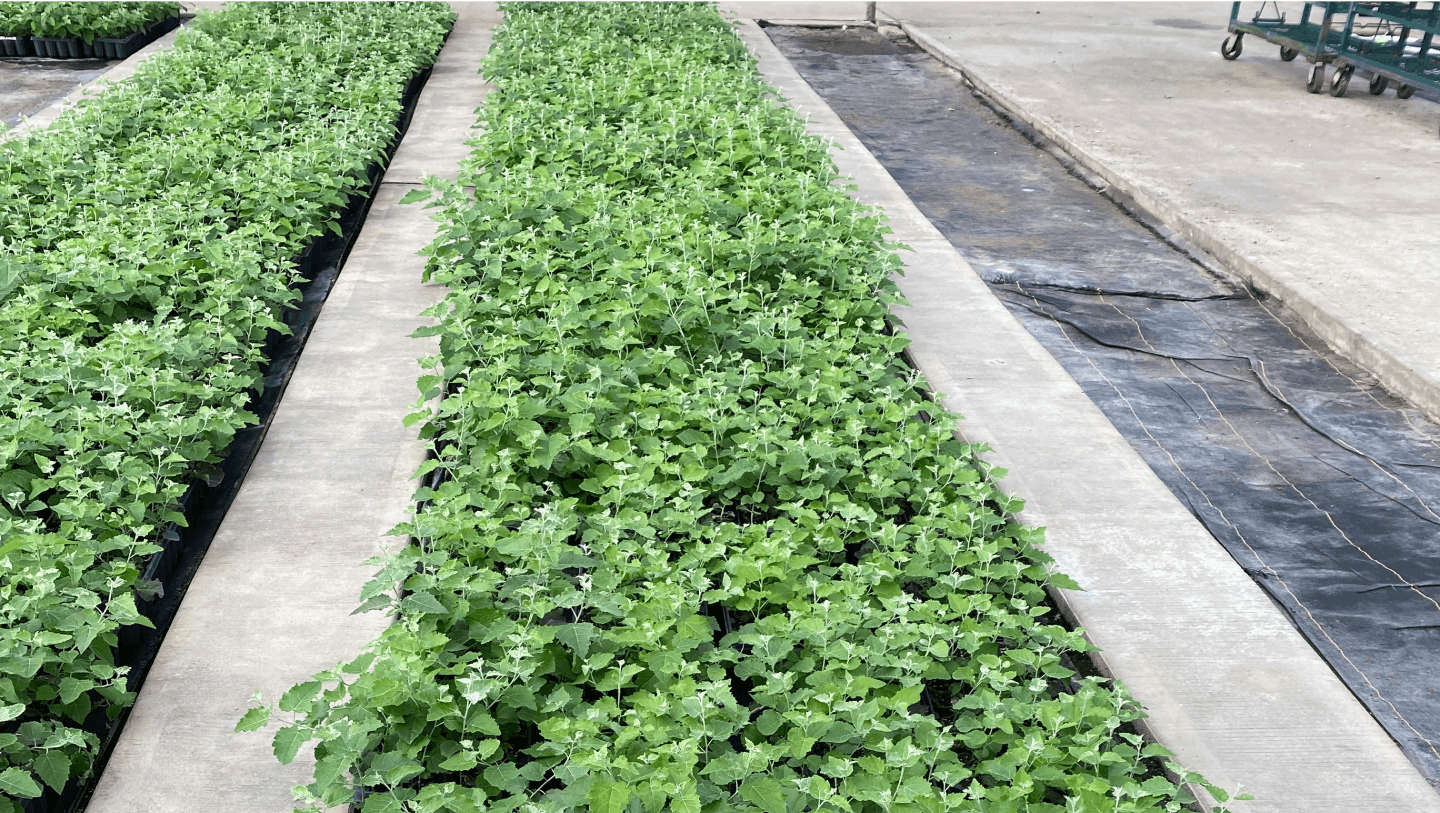 Rows of Living Carbon's photosynthesis-enhanced seedlings. Photo credit: Living Carbon.
Rows of Living Carbon's photosynthesis-enhanced seedlings. Photo credit: Living Carbon.UNDO – enhanced weathering 🪨
UNDO released a video on LinkedIn with their Soil Scientist, Ifeoma Edeh, talking through their process for soil sampling at their trial site in Scotland and the indicators they look out for to check that carbon removal is taking place – changes in pH, electrical conductivity, and more.
This is a crucial part of their monitoring and measurement process, ensuring that their estimations of carbon removal are accurate.
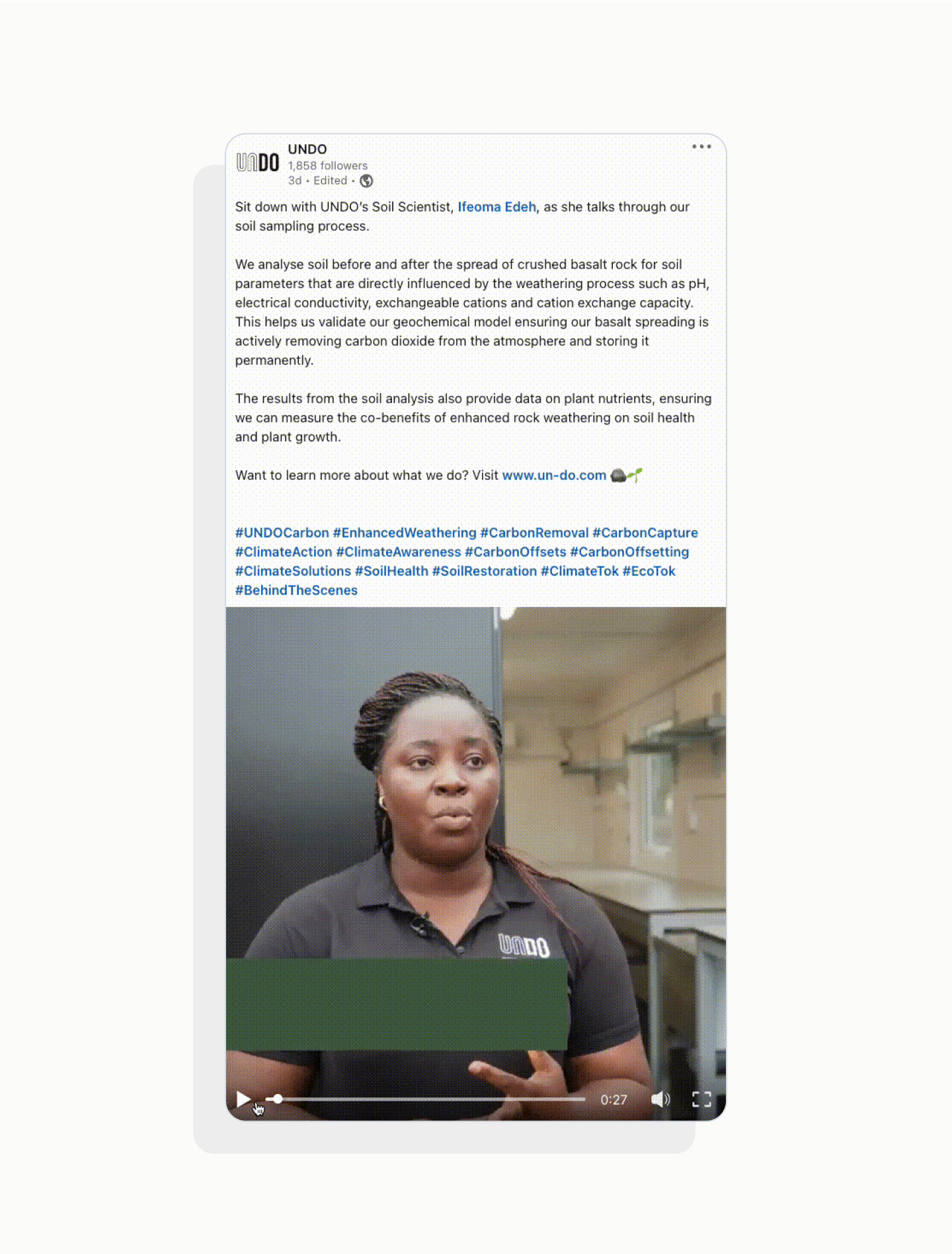
Running Tide – ocean carbon removal 🌊
Running Tide announced a partnership with Tetra Tech which sees them bring together two vital climate solutions: their ocean health and carbon removal project, and offshore wind projects producing renewable energy.
The partnership seeks to bring nature-based solutions within offshore wind projects, ensuring that ocean habitats are being protected and biodiversity is being boosted at offshore wind locations – improving overall ocean health and reducing climate risks in the ocean.
This also includes how Running Tide’s pioneering approach to ocean carbon removal – growing and sinking kelp – can be applied to offshore wind sites. Some of the proposals can be seen in the below diagram by Running Tide:
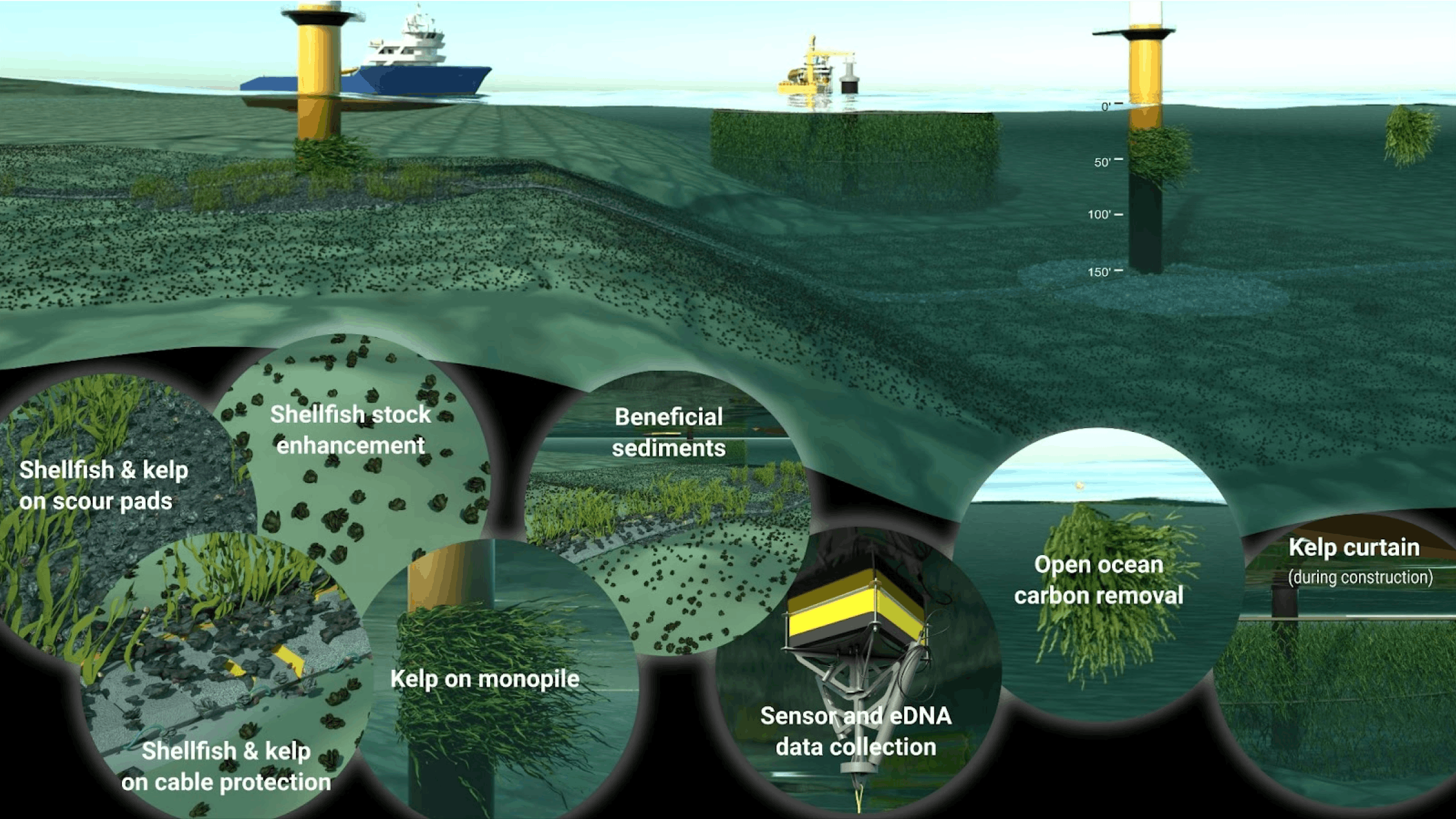 Diagram showing ocean health and removal possibilities at offshore wind turbine sites. Credit: Running Tide.
Diagram showing ocean health and removal possibilities at offshore wind turbine sites. Credit: Running Tide.Readers also liked
Readers also liked

Subscribe for emissions intelligence insights
Get the latest updates in the world of carbon tracking, accounting, reporting, and offsetting direct to your inbox.


